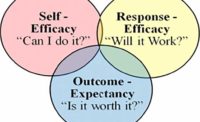This month, I want to discuss the value of empathic leadership. It’s a follow-up to last month’s column on “empathetic correction” — the need to put ourselves in the other person’s shoes before diagnosing a behavior-related problem and offering advice for improvement.
Let’s consider four different ways you can lead others. At any point in time you can coach, instruct, support, or delegate, depending on your empathic diagnosis of the situation.
(To understand the difference between these approaches, recall the basic ABC paradigm of behavior-based safety. “A” stands for activator or the various conditions or events that precede behavior (“B”) and direct it. “C” refers to the consequences that follow behavior and influence whether it will occur again. Consequences motivate behavior.)
Coaching
Coaches give direction and provide feedback. They present a plan, perhaps specific behaviors needed for a certain task, and then follow up with support and empathic correction to pinpoint what worked and what did not. Periodic activators (direction) keep people on the right track, while intermittent consequences (feedback) provide motivation to keep people going.Delegating
Sometimes it’s best to give an assignment in general terms (without specific directions) and to limit interpersonal behavior-focused feedback. This is true when team members are already motivated to do their best and will give each other direction, support, and feedback when needed. These individuals should be self-accountable (or responsible), and expected to use self-management techniques (activators and consequences) to keep themselves motivated and on the right track.Instructing
Some people are already highly motivated to perform well, but don’t know exactly what to do. This is often the case with new hires. In this case, you need to focus on giving behavior-focused instruction.Supporting
What about the experienced worker who does the same tasks day after day? This individual doesn’t need your direction, but could benefit if you periodically give sincere thanks for a job well done. Broadening a job assignment, varying the task components, or assigning leadership responsibilities are other means of providing support.Competence and commitment
So how do you know which leadership style to use? This is where empathy comes into play. Your assessment of situations and people — through observing, listening, and questioning — will determine what approach to use. Look for two critical characteristics: competence and commitment.Coaching is needed when a person’s competence and commitment regarding safety are relatively low. You can improve competence through specific direction and feedback, and increase commitment by sincerely giving appreciation and support. Anything that increases a person’s perception of importance or self-worth on the job can enhance commitment. What makes that happen? It’s not always obvious, but if you listen, observe, and ask questions you’ll find out.
Delegating is relevant when people know what to do (competence) and are motivated to do it (commitment). Delegating leaders provide clear expectations and show sincere appreciation for worthwhile work. They enable self-direction and self-motivation.
Empathic leaders usually know when an individual or work team advances to this level because they have observed successive progress. But it’s often useful to ask people whether they are ready for this style of leadership. If they say “no,” then ask what they need to reach this stage. Do they need more competence through direction? More commitment through some kind of support the organization could make available?
Instructive leadership is called for when people are internally motivated to perform well, but don’t know how to maximize their efforts. In this case, empathic leaders focus on giving specific behavior-based directions.
Supportive leadership is needed when people know what to do for safety, but don’t always follow through. This problem can’t be solved with direction or training. People need supportive leadership when their motivation or commitment is low. This is particularly evident when workers perform irregularly or inconsistently. Their good days indicate they know what to do, but their bad days suggest a motivational problem. Support must be given, but how? This can only be answered through empathic listening, observing, and questioning.
Causes of low commitment vary dramatically, from interpersonal conflict on the job to emotional upheaval at home. Such causes can only be discovered through empathic listening. At times, diagnosing and treating a motivational problem requires special assistance. The best you can do here is recognize a need for professional help and offer advice and support.
Don't keep it a secret
You might want to consider the benefits of telling people what leadership style you plan to use, asking permission for a particular approach, or asking an individual or team what style they would prefer. This is particularly useful when moving from one approach to another. If you feel it’s time to move from giving instructions to delegating, announce your change and explain the reasons.Empathic leadership works best when everyone involved understands the four approaches and the two critical factors that determine the need for one style over others. Then people can request a certain leadership style from their flexible and empathic leaders.
By E. Scott Geller, Ph.D., senior partner, Safety Performance Solutions, and professor of psychology, Virginia Tech. For more information, call SPS at (540) 951-7233; e-mail: safety@safetyperformance.com; web site: www.safetyperformance.com


